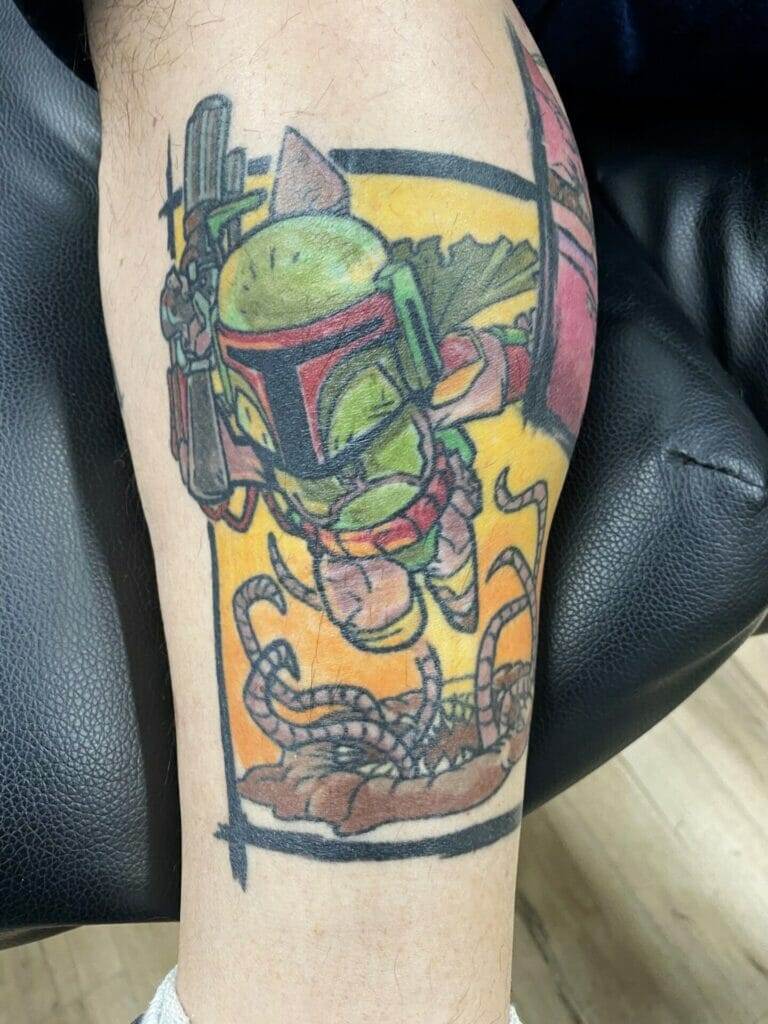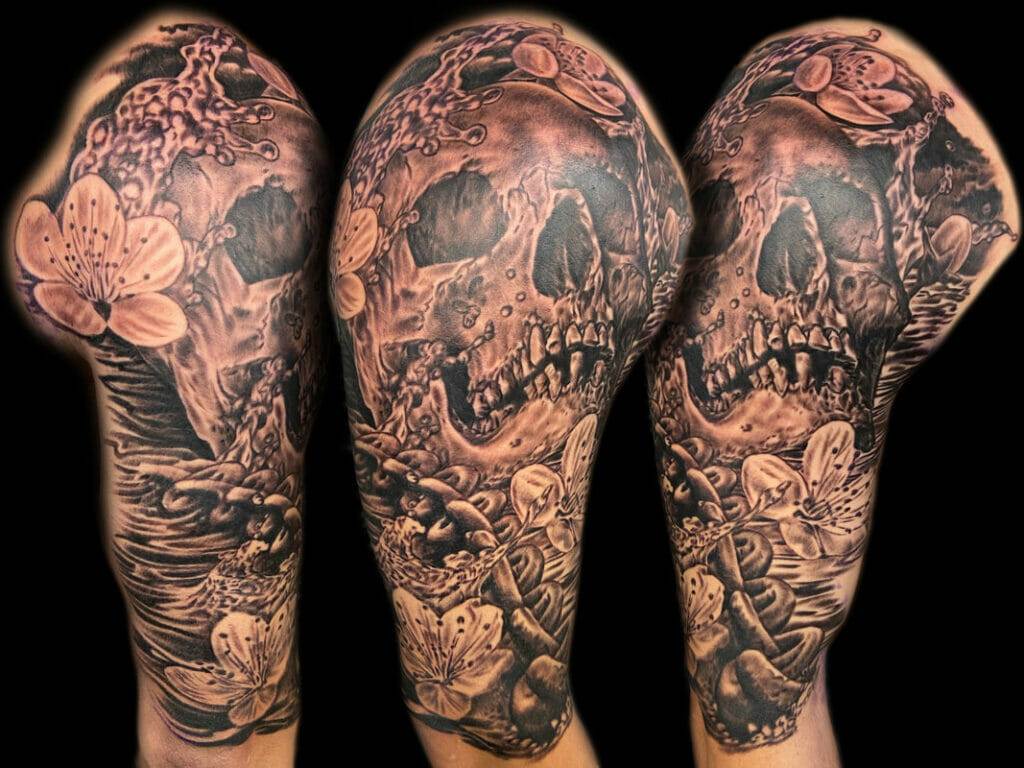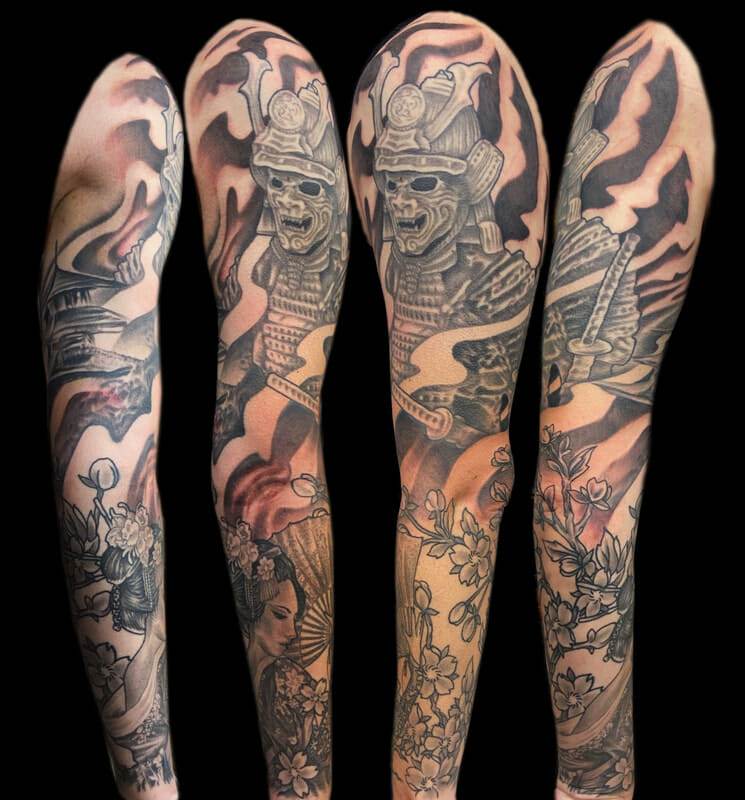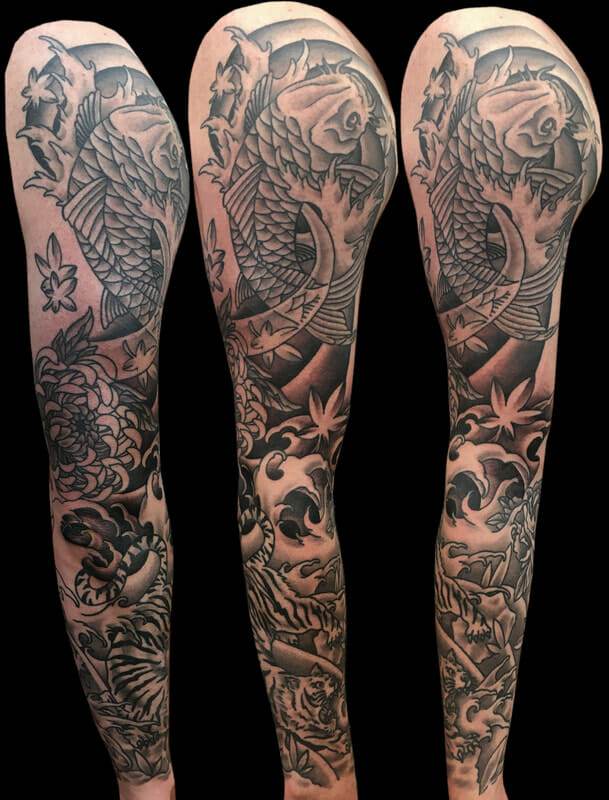Tattooing is an ancient practice that has been a part of human culture for thousands of years. The art of tattooing involves permanently marking the skin with ink, creating designs and patterns that hold personal and cultural significance. Throughout history, tattoos have served various purposes, from religious and spiritual rituals to social status symbols and expressions of personal identity.
Tattooing can be traced back to ancient times, with evidence of tattoos found on mummies and ancient artifacts. For example, the oldest known tattooed mummy is Ötzi the Iceman, who lived around 3300 BCE. Ötzi had over 60 tattoos on his body, consisting of simple lines and dots. These early tattoos were likely created using primitive tools such as bone or stone needles and natural pigments.
The cultural significance of tattoos varies across different societies. In some cultures, tattoos are seen as a form of protection or a way to ward off evil spirits. In others, they are used to mark important life events or signify membership in a particular group or tribe. Tattoos can also serve as a form of self-expression and individuality, allowing people to showcase their beliefs, values, and personal experiences.
The earliest forms of tattooing
The earliest known tattoos can be traced back to ancient Egypt, where mummies have been discovered with tattoos dating back to around 2000 BCE. These tattoos were typically simple designs such as dots, lines, and geometric shapes. They were often found on women and were believed to have been used for therapeutic purposes or as a form of protection during childbirth.
In ancient Greece and Rome, tattoos were associated with slaves and criminals. These individuals would be marked with tattoos as a form of punishment or identification. However, there were also instances where tattoos were used for decorative purposes among the upper classes.
The tools and techniques used in early tattooing were relatively simple. Needles made from bone or metal were used to puncture the skin, and natural pigments such as charcoal or ash were used to create the designs. These early tattoos were often created by hand, with the artist using their own skill and precision to create intricate patterns.
The influence of indigenous cultures on tattoo styles
Indigenous cultures around the world have long practiced tattooing, each with their own unique styles and techniques. These cultures have had a significant influence on modern tattooing, shaping the way we perceive and appreciate tattoos today.
In Polynesia, tattooing has a rich history and cultural significance. The art of tattooing in Polynesia is known as tā moko, and it is deeply rooted in the traditions and beliefs of the Maori people. Tā moko is not just about aesthetics; it is a way to tell stories, honor ancestors, and express one’s identity. Traditional Maori tattoos are intricate and symmetrical, often featuring spirals, curves, and geometric patterns.
In Southeast Asia, traditional tattooing has been practiced for centuries by various indigenous tribes. The designs are often inspired by nature, with motifs such as animals, plants, and mythical creatures. These tattoos are believed to provide protection and bring good fortune to the wearer.
The indigenous cultures of North America also have a rich tradition of tattooing. Native American tribes such as the Haida, Inuit, and Navajo have used tattoos as a form of spiritual expression and cultural identity. The designs often incorporate symbols that represent important aspects of their culture, such as animals, feathers, and tribal patterns.
The rise of tattooing in Western culture
Tattooing became popular in Western societies during the late 19th and early 20th centuries. Initially, tattoos were associated with sailors and circus performers, who would often get tattoos as souvenirs from their travels or as a form of self-expression. However, as tattooing became more mainstream, it began to attract a wider audience.
In the early 20th century, tattooing was seen as a rebellious and counter-cultural act. It was often associated with bikers, gang members, and other marginalized groups. However, as societal attitudes towards tattoos began to shift, they became more accepted and even celebrated as a form of art and self-expression.
Tattoos in Western culture often hold personal significance for the wearer. They can represent important life events, personal beliefs, or serve as a form of memorial for loved ones. Tattoos have also become a way for people to showcase their individuality and unique sense of style.
The impact of the military on tattooing

The military has had a significant influence on tattooing, particularly in Western cultures. Soldiers have long used tattoos as a way to commemorate their service and show their allegiance to their country or unit. Military-inspired tattoos often feature patriotic symbols such as flags, eagles, and military insignia.
Tattoos have also played a role in military culture as a form of identification. In the past, soldiers would often get tattoos to mark their blood type or other important medical information in case of emergencies. While this practice is less common today due to advances in technology, tattoos still hold a special place in military culture.
The emergence of traditional American tattoos
Traditional American tattoos, also known as old school tattoos, have a rich history and cultural significance. These tattoos are characterized by bold lines, bright colors, and iconic designs such as anchors, roses, and pin-up girls. Traditional American tattoos were popularized by sailors in the early 20th century and have since become an iconic part of American tattoo culture.
Each design in traditional American tattooing has its own meaning and symbolism. For example, an anchor represents stability and strength, while a rose symbolizes love and beauty. These tattoos often tell a story or convey a message, allowing the wearer to express their values and beliefs.
The evolution of Japanese tattooing
Japanese tattooing, also known as irezumi, has a long and storied history. Traditional Japanese tattoos are characterized by intricate designs, vibrant colors, and a distinct style that sets them apart from other tattoo traditions. These tattoos often feature mythical creatures such as dragons and phoenixes, as well as traditional Japanese motifs such as cherry blossoms and waves.
Japanese tattoos have deep cultural and spiritual significance. They are often seen as a form of protection and are believed to bring good fortune to the wearer. Traditional Japanese tattooing is a highly skilled art form that requires years of training and apprenticeship to master.
The rise of black and grey tattoos
Black and grey tattoos have become increasingly popular in recent years. This style of tattooing uses varying shades of black ink to create depth and dimension, resulting in a more realistic and subtle look compared to traditional color tattoos.
Black and grey tattoos are often used to create portraits or realistic depictions of objects or scenes. This style allows for more detail and shading, making the tattoo appear more like a work of art. Black and grey tattoos can also be used to create a sense of mood or emotion, with darker shades representing sadness or intensity.
The popularity of watercolor tattoos
Watercolor tattoos have gained popularity in recent years for their unique and vibrant appearance. This style mimics the look of watercolor paintings, with soft edges, blending colors, and a lack of bold outlines. Watercolor tattoos often feature abstract designs or images inspired by nature, such as flowers or animals.
Watercolor tattoos are known for their delicate and ethereal quality. They can be used to create a sense of movement or fluidity, with colors bleeding into one another. This style allows for more creativity and experimentation, as artists can blend different colors and create unique effects.
The emergence of minimalistic tattoos
Minimalistic tattoos have become a popular choice for those who prefer a more subtle and understated look. This style focuses on simplicity and uses clean lines and minimal shading to create small, minimalist designs. Popular minimalistic tattoo designs include geometric shapes, symbols, and small quotes or words.
Minimalistic tattoos are often chosen for their versatility and timeless appeal. They can be easily incorporated into existing tattoos or used as standalone pieces. Minimalistic tattoos are also popular among those who prefer a more discreet look, as they can be easily hidden or shown off depending on the wearer’s preference.

The future of tattooing: new styles and techniques to come
As technology continues to advance, new styles and techniques in tattooing are constantly emerging. One such technique is 3D tattooing, which uses shading and perspective to create the illusion of depth and dimension. This style allows for more realistic and lifelike tattoos, with designs that appear to jump off the skin.
Another emerging trend is the use of UV-reactive ink, which glows under blacklight. UV tattoos are often used to create hidden or secret designs that are only visible under certain lighting conditions. This style allows for a more interactive and dynamic tattoo experience.
Conclusion:
Tattooing has a long and rich history that spans across cultures and time periods. From the earliest known tattoos found on mummies to the modern styles and techniques of today, tattoos have evolved and adapted to reflect the changing attitudes and beliefs of society.
Tattoos continue to hold cultural significance in modern society, serving as a form of self-expression, personal identity, and artistic creativity. Whether it’s a traditional American tattoo, a Japanese irezumi, or a minimalist design, tattoos allow individuals to showcase their beliefs, values, and experiences.
As technology continues to advance, it is likely that new styles and techniques in tattooing will continue to emerge. From 3D tattoos to UV-reactive ink, the future of tattooing holds endless possibilities. However, no matter how tattoos evolve, their cultural significance and ability to tell stories and convey meaning will always remain.



